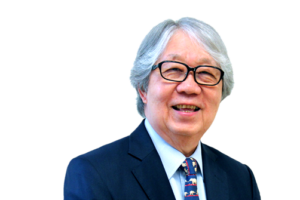COLUMNISTS: Are art workers non-essential?
.Tommy Koh
They enrich our cultural life in Singapore and many of us spent time watching their works during the circuit breaker period
.
Last weekend, The Sunday Times published results of a survey it commissioned which asked 1,000 respondents which are the jobs that are the most crucial in keeping Singapore going.


The results are very interesting.
The survey includes a definition of an essential worker as someone who is engaged in work deemed necessary to meet the basic needs of human survival and well-being, such as food, health, safety and cleaning.
When asked to identify the jobs that are essential and non-essential from a list of 20 jobs based on this definition, respondents’ top five picks for essential jobs were: doctor and nurse, cleaner, garbage collector, hawker and deliveryman.
Their five picks for non-essential jobs were: artist (71 per cent of the respondents), telemarketer, social media manager or public relations specialist, business consultant and human resource manager. The survey was conducted by consumer research firm Milieu Insight.
This finding, with artists topping the list of non-essential jobs, has caused pain and consternation among the arts community. I would like to comfort them by reminding them that the survey was conducted during a global public health crisis, when many respondents’ minds are understandably on health and their basic needs such as food. This might be why they consider artists less essential.
It does not necessarily mean respondents do not value the work of artists in normal times. On the contrary, many people in Singapore appreciate and enjoy the work of artists. In this article I will explain why I think art workers play an important role in Singapore.


WHO ARE THE ART WORKERS?
I will define the term “artist” to mean the art workers.
Who are the art workers? In the literary arts, they are our poets, novelists, non-fiction writers, translators, editors and book designers. In the visual arts, they are our painters, sculptors, potters, ceramic artists, printers, photographers, multimedia artists, performance artists and new media artists.
In the performing arts, we have all the workers in music, theatre and film. I would also include the people working in our museums and galleries. As a general rule, art workers are poorly paid. They deserve our approval and not our disapproval.

This finding, with artists topping the list of non-essential jobs, has caused pain and consternation among the arts community. I would like to comfort them by reminding them that the survey was conducted during a global public health crisis, when many respondents’ minds are understandably on health and their basic needs such as food. This might be why they consider artists less essential.


SINGAPORE WITHOUT MUSIC
Without musicians, we would have no music. If we have no composers, we would not have had Zubir Said, the composer of our national anthem.
Music touches our hearts and it can evoke strong feelings, including the love of country. When Singaporeans sing Majulah Singapura together, they feel united and committed to the onward march of the nation. Dick Lee’s song, Home, touches the hearts of all Singaporeans. It has become our most popular national song.
I cannot imagine Singapore without the Singapore Symphony Orchestra, the Singapore Chinese Orchestra, the Singapore Dance Theatre, the Singapore jazz orchestras, the Singapore Lyric Opera, the Esplanade and many others. Making music, singing and dancing are three of the things which make us human.


THE VALUE OF LITERATURE
Literature is undervalued in Singapore. Most Singapore schools no longer require their students to study literature as a compulsory subject. Most Singaporean parents feel that literature is not a useful subject for their children to study.
I hold the contrary view. I feel that it is “useful” to read literature because it will improve our ability to write clearly, it will enhance our understanding of the human condition, it will increase our empathy for others and it will help unlock our understanding of another country or another civilisation.
When our young diplomats call on me before their departure for our embassy in Washington, DC, I always give them two lists of books to read. The first list contains 10 books of non-fiction. The second list consists of 10 books of fiction. To understand America, you need to read both types of books.
To understand Singapore, it is not enough to read reports and non-fiction books. We should also read the poetry, short stories and novels of our writers. The non-fiction books give us the facts and numbers. The other writings give life and blood to the facts and numbers.
The poems of Edwin Thumboo, Lee Tzu Pheng, Boey Kim Cheng and Leong Liew Geok; the short stories of S. Rajaratnam, Catherine Lim, Claire Tham and Simon Tay; the novels of Goh Poh Seng, Suchen Christine Lim, Meira Chand, Rex Shelley, Isa Kamari and Ovidia Yu; and the plays of Kuo Pao Kun, Haresh Sharma, Robert Yeo and Lim Chor Pee are among my favourites.
I am happy to say that there is a new generation of talented young poets and writers in Singapore.


THE VALUE OF VISUAL ART
What is the value of visual art? Why do I collect the paintings of Singaporean artists and the pots of Iskandar Jalil? Why do I enjoy visiting our museums and galleries?
I collect a painting or pot, not for its commercial value, but for its beauty. It gives me joy to look at it, again and again.
Sometimes, a painting has sentimental value, because it is a painting of my childhood home or because it brings back happy memories of an event, a place or a friend.
Sometimes, a painting provokes us to leave our comfort zone and look at reality from a different perspective.
Some paintings can evoke much deeper emotions. Picasso’s painting of the Spanish Civil War, Guernica, is such a painting. I have seen people shedding tears before it. I have also seen people weeping before the abstract paintings of Mark Rothko. Obviously, those paintings speak to their viewers and evoke their feelings. It is the aspiration of every artist to produce art which speaks to the viewers. Our lives are enriched by beautiful art and design.


THE MAGIC OF THEATRE
I love going to the theatre. I regard the theatre as a magical place.
When you sit in a darkened theatre, you are transported to another world. For the next two hours, you are entertained and inspired, provoked and challenged and made to laugh and cry.
I thank Wild Rice, Pangdemonium, The Necessary Stage, TheatreWorks, The Theatre Practice and the Singapore Repertory Theatre for the many happy hours I have spent watching their productions.
Our playwrights, directors, actors and theatre companies have excelled in staging plays, musicals and pantomimes. Haresh Sharma’s plays deal with our social issues. His play, Off Centre, has become a Singapore classic. Kuo Pao Kun’s plays, The Coffin Is Too Big For the Hole, Lao Jiu and Descendants Of The Eunuch Admiral, are three of my favourites. Stella Kon’s Emily Of Emerald Hill; Michael Chiang’s Army Daze and Beauty World; Robert Yeo’s Are You There, Singapore?; Tan Tarn How’s The Lady Of Soul And Her Ultimate ‘S’ Machine; and Alfian Sa’at’s Cooling Off Day are some of our most important plays.


THE POWER OF FILM
Film is a very powerful medium. A successful film can transcend barriers of language, culture and geography. A successful film can highlight a national or international issue in an entertaining way. Last year, the US Academy of Motion Picture Arts and Sciences gave two extraordinary awards.
For the first time in its history, the Oscar for Best Picture was given to an Asian film, Parasite, which deals with social and economic inequality in South Korea. The brilliant film by Bong Joon-ho revolves around two families, the Kims who are poor and the Parks who are rich. Inequality is, of course, a global issue and this could be one of the reasons for the academy’s choice.
The Oscar for Best Foreign Language Film was given to a Mexican film called Roma. The film is about a domestic helper, Cleo, an indigenous woman. The indigenous people of Mexico are marginalised and discriminated against.
By casting an indigenous woman, Yalitza Aparicio, to play the role of Cleo, the director of the film, Alfonso Cuaron, wanted to tell the story of the Mixtec women who work as maids in Mexico.
The success of Roma has brought about changes in Mexico. The Mexican Congress has approved a law to grant the country’s two million domestic workers labour rights such as social protection, written contracts and paid vacations. The National Domestic Workers Alliance in the United States has urged the US Congress to adopt a National Domestic Workers Bill of Rights.
In Singapore, nothing so dramatic has taken place yet in our film industry. Our two most successful film-makers, Eric Khoo and Jack Neo, have been joined by a new generation of talented young film-makers, such as Royston Tan, Anthony Chen, Boo Junfeng, K. Rajagopal and Kirsten Tan. They are making good films and winning international recognition. I hope, one day, a Singapore film will win an Oscar or a Cannes Palme d’Or.


CONCLUSION
Singaporeans today enjoy a rich cultural life. There are many performances of music, dance, theatre and film all year round. We have world class museums and galleries.
Our artists have produced outstanding works. Singaporeans should remember that the high quality of cultural life they enjoy is made possible by our art workers.
During the circuit breaker period, many Singaporeans kept themselves sane by reading books, listening to music, and watching film and television shows and concerts online. It is not right to regard our art workers as non-essential. Without them, Singapore would be a cultural desert.


• Professor Tommy Koh is rector of Tembusu College, National University of Singapore. He was founding chairman of the National Arts Council, 1991 to 1996.


SIGN UP TO RECEIVE OUR EMAIL
.
The most important news of the day about the ASEAN Countries and the world in one email: [email protected]
6.18.2020










